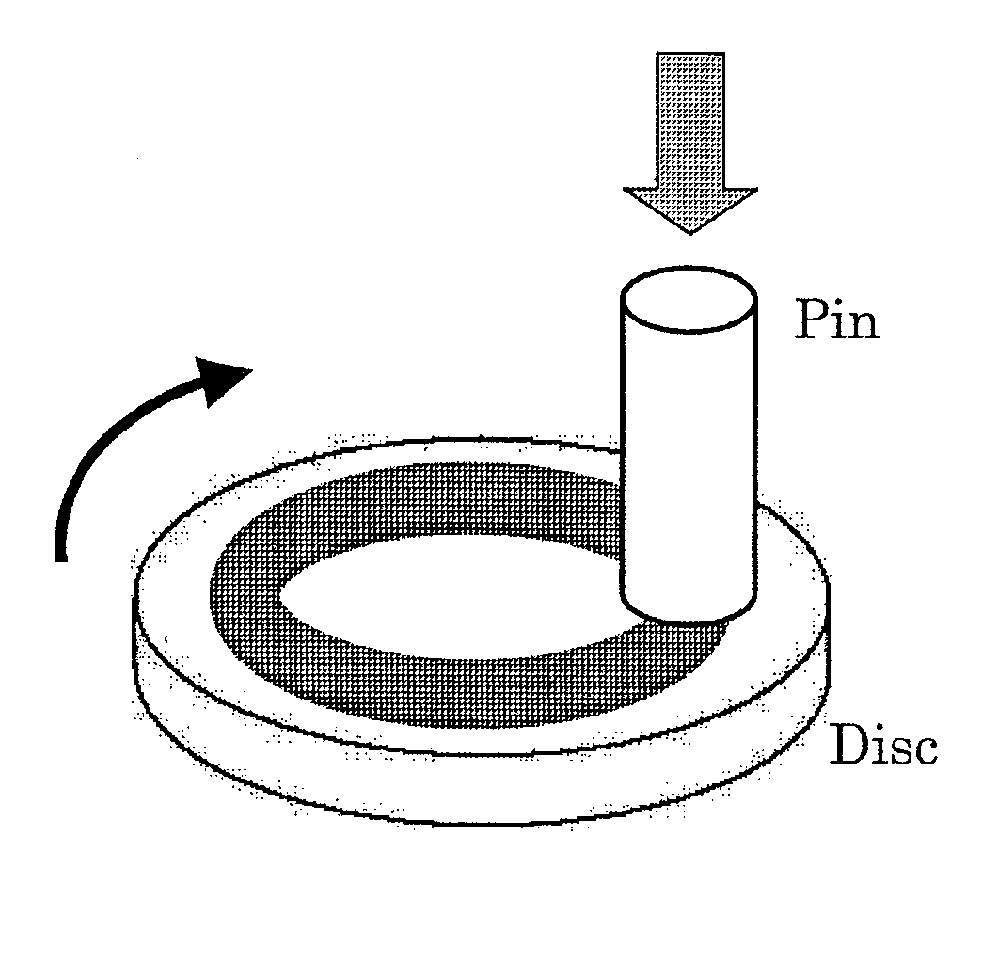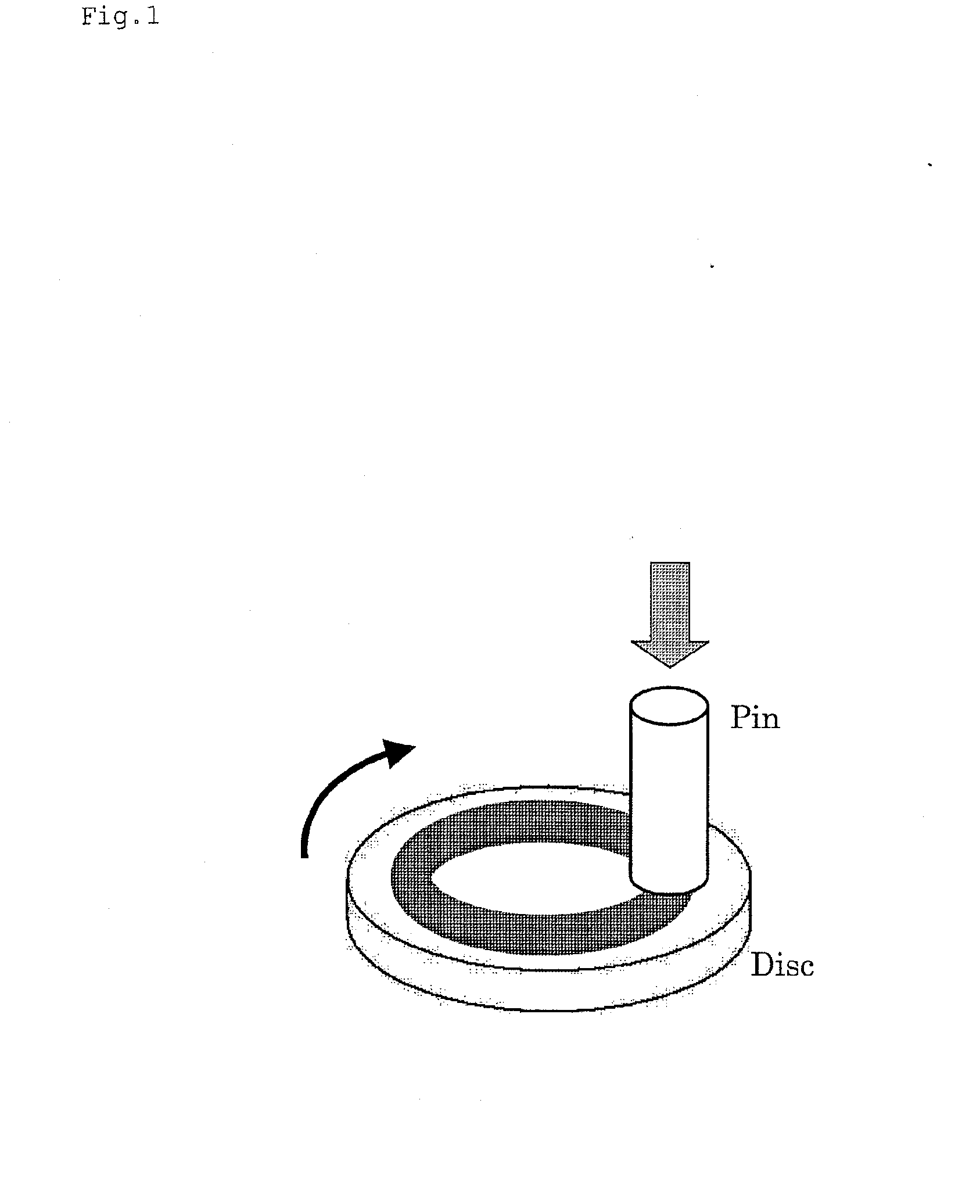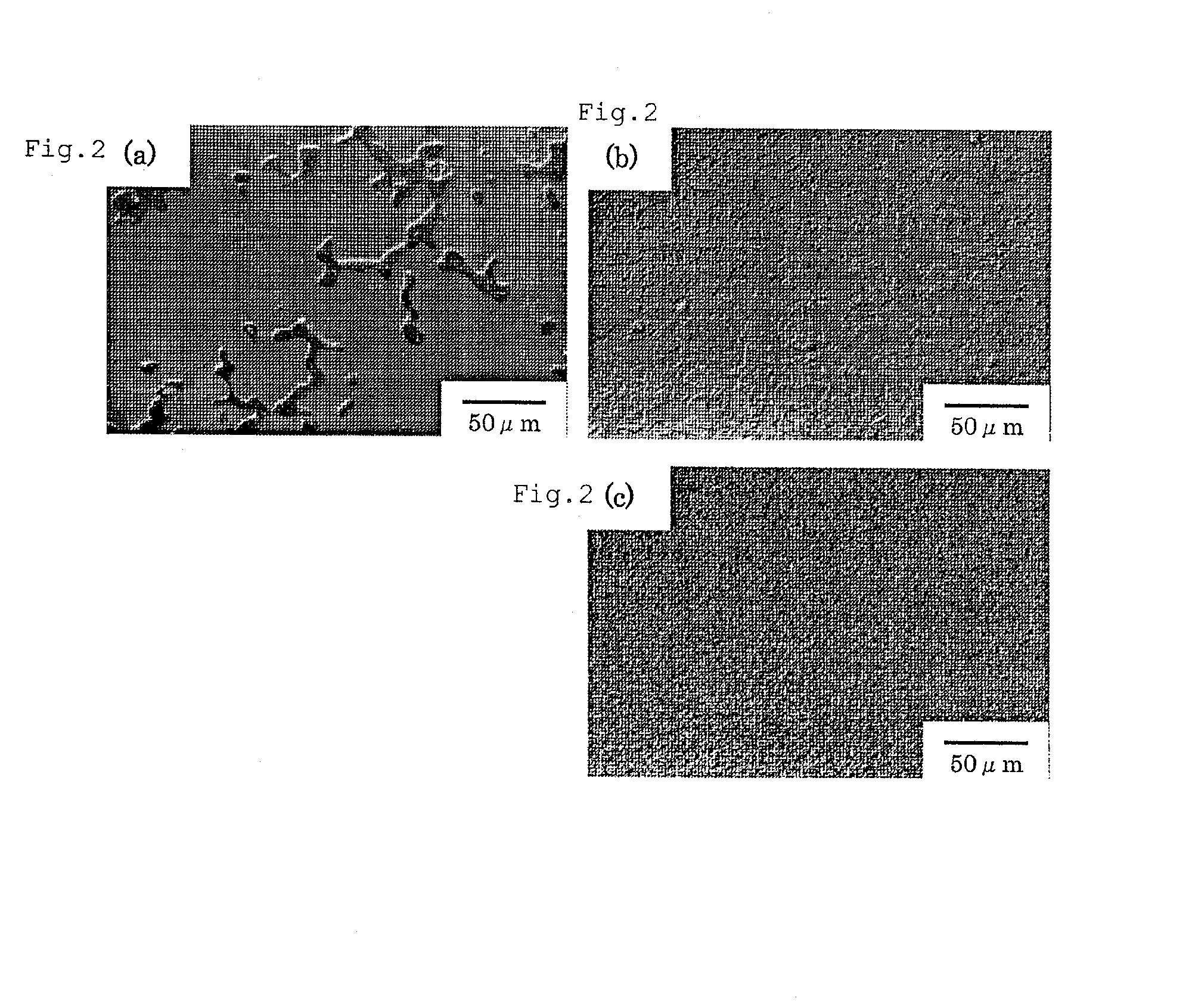Co-Cr-Mo Alloy for Artificial Joint Having Excellent Wear Resistance
a technology of wear resistance and alloy, which is applied in the direction of joint implants, prostheses, joint implants, etc., can solve the problems of unsuitable materials and abrasion wear, and achieve the effects of improving wear resistance, low toxicity, and conspicuous suppression of wear debris in the living body
- Summary
- Abstract
- Description
- Claims
- Application Information
AI Technical Summary
Benefits of technology
Problems solved by technology
Method used
Image
Examples
example 1
[0067](Wear Test Results for Alloys With Reduced Crystal Grain Size)
[0068]FIG. 2 shows the optical-microscopic structure of ASTM F75 (a), and of Co-29Cr-6Mo alloys (having a reduced crystal grain size) prepared by high-temperature forging, i.e., (b) mean grain size 14 μm, and (c) mean grain size 3 μm. ASTM F75 is a Co—Cr—Mo cast alloy that is currently actually used as a bone epiphysis material in artificial joints, and contains large amounts of carbides in order to improve the wear resistance. In the present example, it is indicated that the crystal grain size of the alloy prepared using high-temperature forging is greatly reduced.
[0069]FIG. 3 shows the wear test results for ASTM F75 and Co-29Cr-6Mo alloys (with a finely reduced crystal grain size) prepared using high-temperature forging. It is indicated that compared to the wear rate of ASTM F75, the prepared Co—Cr—Mo alloy with a mean crystal grain size of 14 μm has about the same wear rate, and that the Co—Cr—Mo alloy with a mea...
example 2
[0070](Wear Test Results for Alloys With Increased Amount of Added Me)
[0071]FIGS. 4(a), (b) and (c) show the optical-microscopic structures of Co-29Cr-xMO (x=6, 8, 10) forged alloys in which the respective amounts of Mo added were increased to 6, 8, and 10 mass %. In the 10Mo alloy, in which the crystal grain size was approximately 14 μm, but the amount of Mo added was large, fine deposition of the σ phase was recognized. Forging was performed by high-temperature forging in the same manner as in Example 1
[0072]FIG. 5 shows the wear test results for Co-29Cr-xMo (x=6, 8, 10) forged alloys in which the amount of Mo added was increased to 6, 8, and 10 mass %, and for ASTM F75. The wear rate of the 6Mo alloy (Co-29Cr-6Mo alloy) showed no great difference from that of ASTM F75; however, the wear rates of the 8Mo alloy (Co-29Cr-8Mo alloy) and 10Mo alloy (Co-29Cr-10Mo alloy) were lower than that of ASTM F75. This indicates that the wear rate of Co—Cr—Mo alloys is reduced as the amount of Mo...
example 3
[0074](Wear Resistance Test of Sinters of Co-29Cr-6Mo Alloy Powders Prepared by Gas Atomization Method)
[0075](Test Method)
[0076]A Co-29Cr-6Mo cast material (600 g) prepared using a vacuum induction melting furnace was used as the starting raw material. This was melted at a high frequency, and atomized in an Ar atmosphere. Sintering was performed using a vacuum high-temperature sintering furnace (hot press: manufactured by NEMS) using the alloy powder thus prepared (grain size 25 μm or less). Sintering was performed at 936° C. and 1052° C., at a pressing pressure of 40 MPa.
[0077](Results)
[0078]The optical-microscopic structures of the 936° C. and 1052° C. sinters are respectively shown in FIGS. 6A and 6B. It was found from an X-ray diffraction test that in the structure of the 936° C. sinter, an HCP phase was the main constituent phase, but that a σ phase was also included to a slight extent. The porosity in this case was 1 to 10%. Furthermore, it was found that the structure of the ...
PUM
| Property | Measurement | Unit |
|---|---|---|
| Temperature | aaaaa | aaaaa |
| Temperature | aaaaa | aaaaa |
| Temperature | aaaaa | aaaaa |
Abstract
Description
Claims
Application Information
 Login to View More
Login to View More - R&D
- Intellectual Property
- Life Sciences
- Materials
- Tech Scout
- Unparalleled Data Quality
- Higher Quality Content
- 60% Fewer Hallucinations
Browse by: Latest US Patents, China's latest patents, Technical Efficacy Thesaurus, Application Domain, Technology Topic, Popular Technical Reports.
© 2025 PatSnap. All rights reserved.Legal|Privacy policy|Modern Slavery Act Transparency Statement|Sitemap|About US| Contact US: help@patsnap.com



